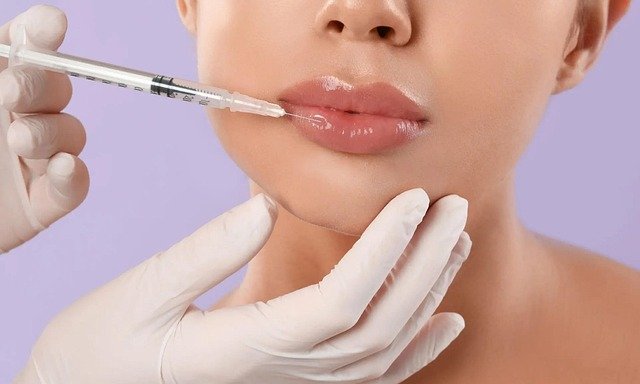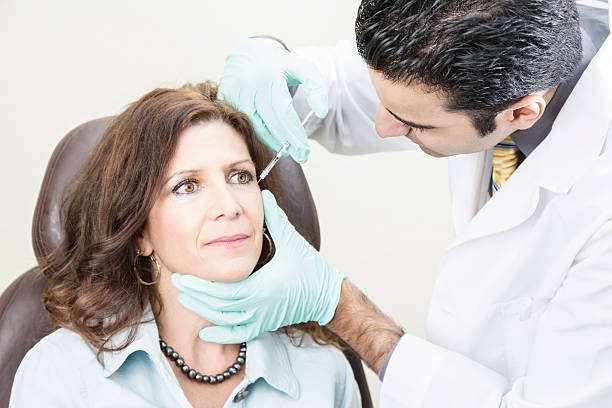Did you know over 2.7 million lip augmentation procedures were performed globally in 2020? Separating myths from facts is crucial for making informed decisions. Are you curious about what happens during the procedure or how much pain to expect at the private clinic? Let’s dive into the ten essential things you need to know about lip injections, debunking common myths along the way. From understanding different types of llers to managing post-injection discomfort, we’ve covered you with all the must-know details.
Understanding Lip Fillers
Myths vs Facts
Lip injections are temporary, typically lasting several months before requiring a touch-up. They do not provide permanent results. Contrary to common misconceptions/myth, lip injections do not always lead to over lled or swollen lips; when done correctly, they can look natural. Despite concerns about unnatural appearances, skilled practitioners can enhance lips subtly and harmoniously with injections.
FDA Approval
Certain dermal fillers used in lip enhancements have received approval from the FDA for safety and effectiveness. FDA endorsement guarantees that the product meets stringent standards for quality and performance, ensuring safer outcomes for patients. Opting for an FDA filler is crucial to minimize risks associated with potential adverse reactions or unsatisfactory results
Safety Measures
Only qualified medical professionals must administer lip injections to ensure safe and effective procedures. Utilizing sterile techniques and clean equipment during lip filler treatments reduces the likelihood of infections or complications post-injection. Adhering strictly to established safety protocols significantly lowers the chances of adverse effects or undesirable outcomes following the procedure.
The Truth About Pain
Lip injections are generally associated with minimal discomfort, with pain levels varying among individuals. Applying a topical numbing cream before the procedure can help reduce any potential pain experienced during lip injections. It’s important to note that each person’stolerance for pain differences
To alleviate any post-treatment discomfort, using ice packs on the lips before and after injections can help numb the area. Taking over-the-counter pain relievers, as recommended by your practitioner, can ease any lingering discomfort. Following the aftercare instructions provided by your practitioner is crucial in minimizing pain and ensuring proper healing.
Individual experiences with lip injections vary widely based on personal preferences andexpectations. While some people report high satisfaction with their results, others may havedifferent outcomes depending on various factors such as desired volume or shape of lips.Reading personal testimonials from others who have undergone lip injections can offervaluable insights into what to expect and how different individuals react to the procedure.
Types and Results
Different Types:
- Dermal fillers for lip injections, like hyaluronic acid fillers, offer unique benefits.
- Consulting a practitioner helps you choose the best filler type for your goals.
Expected Results:
- Lip injections enhance lip volume and shape temporarily
- Touch-ups may be needed as results are not permanent; manage expectations with your practitioner.
Effects on Lip Shape:
- Lip injections improve lip symmetry and balance effectively
- Fillers can de ne the lip border or create a more prominent cupid’s bow based on technique.
Myths Dispelled
Silicone and Collagen Myths:
- Silicone is rarely used as a ller in lip injections nowadays
- Hyaluronic acid llers have replaced collagen due to their safer profile.
- Always choose a practitioner who uses approved and safe fillers for your lip injections.
Dermal Filler Myths:
- Dermal fillers don’t permanently harm or stretch the lips when administered correctly.
- Properly injected dermal fillers should not result in lumps or bumps on the lips.
- Allergic reactions to dermal fillers are exceptionally rare, making them a safe option.
When considering lip injections, it’s crucial to separate myths from facts. The use of silicone has diminished, while hyaluronic acid reigns supreme for its safety. Opting for an experienced practitioner using approved llers ensures a smooth and successful procedure without long-term damage or allergic reactions. Remember, advancements in dermal filler technology have made these procedures safer than ever before, dispelling common misconceptions about their effects on the lips
Risks and Safety
Potential Risks
Lip injections can lead to bruising, swelling, and even infection. In rare cases, complications like allergic reactions or severe vascular occlusion may occur. To minimize these risks, it’s crucial to select a skilled practitioner for the procedure.
Choosing a qualified professional who specializes in performing lip injections is essential. Following all the pre and post-treatment guidelines provided by the practitioner is vital in reducing potential risks. By doing so, you significantly decrease the chances of encountering adverse effects from the procedure.
Minimizing Risks
To ensure safety during and after lip injections, opt for a reputable practitioner with substantial experience in administering injectables into the lips. Their expertise plays a critical role in minimizing any associated risks that may arise during or after treatment.
Moreover, adhering strictly to all instructions given by your practitioner before and after theprocedure can help mitigate potential complications effectively. If you notice any unusualsymptoms or have concerns post-treatment, promptly notify your practitioner to address thempromptly.
Aftercare and Maintenance
Post-ller care is crucial for optimal results. Avoid touching or rubbing your lips right after the procedure to prevent irritation or infection.Applying ice packs can help reduce swelling and bruising, promoting faster healing. It’s essential tofollow any specific post-ller care instructions provided by your practitioner to ensure proper recovery.
To maintain the effects of lip injections, certain avoidance measures should be taken into consideration. Steer clear of excessive sun exposure as it can break down the liners more rapidly. Avoid strenuous activities that may increase blood flow to the lips, which could impact the outcome of the procedure. Refrain from massaging or manipulating your lips excessively post-treatment to prevent shifting or uneven distribution of llers.
In rare instances where dissatisfaction arises with lip injections, removal using hyaluronidase might be considered. This process should only be carried out by a qualified medical professional to ensure safety and effectiveness. If you are unhappy with your lip injection results, consult with your practitioner for guidance on potential solutions
Costs and Consultation
When considering lip injections, it’s crucial to start with a consultation. During this process, goals and expectations with the practitioner. They will evaluate if you are a suitable candidate for the procedure
The consultation is an excellent opportunity to ask any questions or address concerns about lip injections. The practitioner will explain the entire process in detail, ensuring that you have a clear understanding before proceeding
Lip injection costs can vary based on factors like the type of filler used and the expertise of the practitioner. It’s essential to consider long-term expenses, including potential touch-up treatments, when analyzing overall costs. Be cautious of extremely low-cost offers, as they might indicate inferior products or inexperienced practitioners.
Longevity and Maintenance
Lip fillers can last between 6 to 12 months, depending on the type of filler used. Hyaluronic acid fillers are popular for lips and typically offer this duration. Touch-up treatments help maintain the desired results over time.
After getting lip injections, it’s crucial to care for your lips properly. with hydrating lip balm to prevent dryness. Protect your lips from harsh weather by using an
SPF lip balm regularly. Avoid exposing your lips to excessive heat right after treatment, such as saunas or hot tubs.
Choosing the Right Practitioner
When considering lip injections and pain, it’s crucial to choose the right practitioner. Look for a professional who is licensed and certified in performing these procedures, ensuring they have the necessary quali fications. Opt for practitioners with specialized training in aesthetic medicine or dermatology, as they possess expertise in cosmetic treatments.
Researching a practitioner’s experience and reputation within the industry is essential before undergoing lip injections. This step helps you gauge their skill level and ensures you are incapable hands during the procedure. By selecting a qualified practitioner, you can minimize risks and achieve satisfactory results post-treatment.
A consultation with your chosen practitioner plays a vital role in your journey towards lipenhancement. During this meeting, discuss your goals, concerns, and expectations regarding the procedure. The practitioner will assess whether you are suitable for lip injections based on your medical history and current health status. Take advantage of this opportunity to gather information, address any doubts or fears, and make an informed decision about moving forward with the treatment.
Summary
You’ve now got the lowdown on lip injections and the understanding of the pain associated with them. From debunking myths, we covered it all. Remember, Safety is key when choosing a practitioner for your lip enhancement journey. Don’t skip proper aftercare and maintenance routines to keep those lips looking luscious. Now that you’re armed with the facts, go ahead and rock those plump pouts with confidence!
Frequently Asked Questions
What are lip fillers made of?
Lip fillers are commonly made of hyaluronic acid, a substance naturally found in the body. This ingredient helps add volume and shape to the lips, providing a natural-looking result that can be tailored to your desired outcome.
Is pain associated with lip injections?
While discomfort during lip injections is possible, most practitioners use numbing agents or ice packs to minimize any pain. The level of discomfort varies for each individual, but many clients report only mild sensations during the procedure.
How long do lip filler results last?
The longevity of lip filler results can vary depending on factors like the type of filler used and an individual’s metabolism. On average, results typically last between 6 months to 1 year before requiring touch-up treatments to maintain fullness in the lips.
Are there risks involved with getting lip injections?
Like any cosmetic procedure, there are potential risks associated with getting lip injections.These risks include allergic reactions, infections, asymmetry, or lumps at injection sites. To mitigate these risks, it’s crucial to choose a skilled practitioner who prioritizes safety and uses high-quality products.
How should I prepare for my consultation about lip injections?
Before your consultation appointment for lip injections, it’s helpful to research different types of fillers and familiarize yourself with common terminology related to the procedure. Come prepared with questions about aftercare instructions and realistic expectations for your desired outcome.



